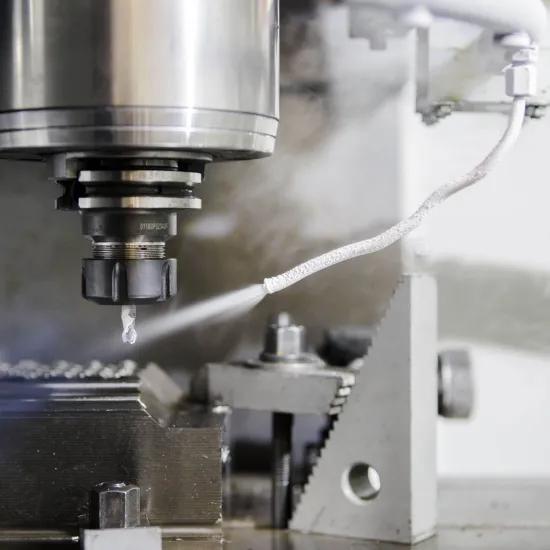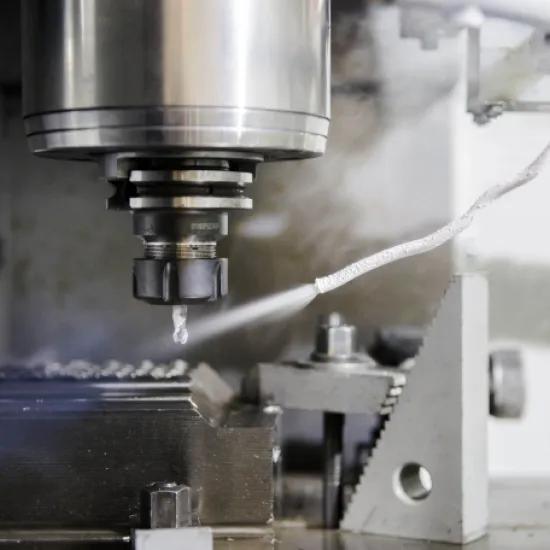Cutting forces play a critical role in milling processes. In this second article we dig deeper in the estimation and optimization of these cutting forces.
In 'Cutting forces, part 1: cutting forces and their influence in milling process' we explained how and why understanding the influence of cutting forces in milling and the factors that affect them is essential for optimizing the process and achieving high-quality results. In this 2nd part we'll discuss the estimation and optimization of these forces.
Estimation of cutting forces: analytical methods
There are several analytical methods to estimate cutting forces in milling processes. These methods rely on various parameters such as the tool geometry, workpiece material properties, cutting conditions, and the interaction between the tool and workpiece. Some of the analytical methods are described below.
Merchant's circle diagram: This is the most commonly used method for estimating cutting forces in milling. The method is based on the geometry of the cutting tool and the workpiece. The cutting force components, including radial force (Fr), tangential force (Ft), and axial force (Fa), can be estimated using equations that consider the rake angle, feed rate, and depth of cut.
Kienzle force model: This method is based on the principle of energy conservation. The cutting force is proportional to the energy required to shear the material, which is related to the volume of material removed during the cutting process. This method also considers elastic and plastic deformation of the material and tool during the cutting process.
Oxley's predictive model: This model is based on the concept of sticking and sliding zones in the cutting process. The sticking zone refers to the area where the chip is in contact with the tool, while the sliding zone is the area where the chip slides along the workpiece surface. The model predicts cutting forces by considering the length of these zones, chip thickness, and the tool's geometrical parameters.
Lee and Shaffer's model: This method is based on the assumption that the cutting force is proportional to the undeformed chip thickness. The model considers the cutting speed, tool geometry, and workpiece material properties.
Shear zone model: This method considers the shear strain and strain rate in the material to estimate the cutting force. The shear strain rate is related to the cutting speed, while the shear strain is related to the chip thickness and undeformed chip thickness.
Overall, these analytical methods provide a good estimation of cutting forces in milling processes. However, they require accurate input parameters, such as the elastic modulus, shear strength, and cutting speed, which may vary depending on the workpiece material and cutting conditions.
How can you optimize your cutting forces?
Optimizing cutting forces during the milling process can help improve the overall efficiency and productivity of the machining process.
Here are some ways to optimize cutting forces during milling:
- Check for right working zone: Check if you are in the right working zone for the tool for the right workpiece material. Reducing the cutting speed, depth of cut, and feed rate can help reduce cutting forces. However, it is essential to ensure that the reduced parameters do not compromise the surface finish or the dimensional accuracy of the part.
- Select appropriate tool geometry: choosing an appropriate tool geometry that matches the workpiece material and the machining process can help reduce cutting forces. For example, selecting a tool with a higher rake angle can reduce cutting forces, while a tool with a lower rake angle can increase cutting forces.
- Use appropriate cutting fluid: using an appropriate cutting fluid can help reduce cutting forces by reducing the friction in the tool-chip contact zone and improve the tool life. For example, using a high-pressure coolant can help reduce cutting forces and also improve chip evacuation.
- Use a stable setup: ensuring that the milling machine setup is stable can help reduce cutting forces. For example, using a rigid work holding system and a stable machine base can help reduce cutting forces and improve surface finish.
- Optimize tool path: optimizing the tool path can help reduce cutting forces by reducing the amount of material being removed during each pass. Ensure a constant chip load at every point in the tool path to prevent overloading of the tool tip. For example, using a trochoidal milling strategy can reduce cutting forces and improve tool life.
- Use adaptive control: using an adaptive control system that adjusts cutting parameters in real-time based on the cutting conditions can help optimize cutting forces and improve the efficiency of the machining process.
By implementing these six strategies, you can help reduce cutting forces, improve surface finish, increase tool life, and improve the overall efficiency of the machining process.
Sirris Online platform
On the 'modelgebaseerdbewerken' online platform you can already simulate the cutting forces for your processes. You can also access models like milling economics model and use them to optimise your machining processes. Access to the platform is free of charge, but you need to register.
You will also find the necessary explanations about working with the models on the platform, but be sure to keep an eye on the Sirris agenda because we will be organising both physical and online events like webinars and workshops.
Would you like to know more? Then get in touch with us!
The online platform is part of the COOCK project 'Model-based processing', which was launched with support from VLAIO.




